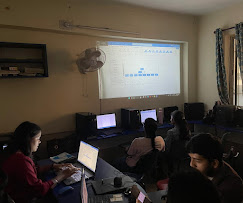AI-Powered Tools Every Data Scientist Should Use
AI-Powered Tools Every Data Scientist Should Use In today’s data-driven world, Artificial Intelligence (AI) and Data Science go hand in hand. Data scientists are no longer just analyzing data — they’re using AI-powered tools to automate processes, visualize trends, and make smarter predictions. These tools not only save time but also help extract deeper insights from complex datasets. As industries adopt AI at a rapid pace, data scientists must stay updated with the latest tools and technologies that enhance productivity and efficiency. In this blog, we’ll explore the most essential AI-powered tools every data scientist should use in 2025, including the fundamental ones like NumPy, Pandas, and Matplotlib, which form the foundation of modern data science learning — especially at top institutes like Emancipation Edutech Pvt. Ltd., Ranchi. 1. NumPy – The Backbone of Scientific Computing NumPy (Numerical Python) is one of the most widely used Python libraries for scientific and mathematical computing. It provides powerful tools for handling large multidimensional arrays and matrices, making complex numerical computations faster and easier. Key features of NumPy include: NumPy is the first step for every data science learner. It’s used in almost every AI and ML project because it supports data structures that form the base of libraries like Pandas and Scikit-learn. At Emancipation Edutech Pvt. Ltd., Plaza Chowk, Ranchi, students are trained to use NumPy effectively for performing mathematical operations and building AI-ready datasets. 2. Pandas – The Ultimate Tool for Data Analysis When it comes to data manipulation and analysis, Pandas is a must-have tool. It provides easy-to-use data structures like Series and DataFrame, making it simple to organize, clean, and analyze data efficiently. With Pandas, you can: Whether you’re dealing with sales reports, survey data, or large-scale AI datasets, Pandas simplifies everything. Combined with NumPy, it forms the foundation of almost every Data Science and Machine Learning workflow. Students learning Data Science at Emancipation Edutech Pvt. Ltd. get hands-on experience using Pandas for real-world analytics projects — preparing them for corporate-level data handling and visualization tasks. 3. Matplotlib – Turning Data into Insights Data visualization is the heart of Data Science. Matplotlib is the go-to Python library for creating beautiful, detailed charts and graphs that communicate data insights effectively. Using Matplotlib, data scientists can: It’s often used with Pandas and NumPy to visualize AI model results or data patterns before model training. A strong understanding of Matplotlib helps students and professionals present findings in a clear, visually appealing way. At Emancipation Edutech Ranchi, students learn Matplotlib as part of their practical data science curriculum, ensuring they can not only analyze but also visualize data professionally. 4. Scikit-Learn – The Core Machine Learning Library Once the data is prepared and visualized, the next step is machine learning — and Scikit-Learn is the best tool for it. This open-source library provides simple and efficient tools for: Scikit-Learn is beginner-friendly and ideal for building predictive models using algorithms like Linear Regression, Decision Trees, and Random Forests. It also integrates seamlessly with Pandas and NumPy, making it a crucial tool for any data scientist. 5. TensorFlow and PyTorch – AI Frameworks for Deep Learning For advanced AI applications, TensorFlow (developed by Google) and PyTorch (developed by Facebook) are industry favorites. These frameworks are used to create deep learning models such as neural networks for: Both libraries offer GPU acceleration, allowing data scientists to train massive models faster and more efficiently. Learning these tools helps students step into the world of AI model development and deployment. 6. Jupyter Notebook – The Perfect Workspace for Data Science No list of AI-powered tools would be complete without Jupyter Notebook. It’s an interactive environment where data scientists can write code, visualize outputs, and document findings — all in one place. It’s perfect for learning, experimentation, and presenting projects. Most data science training institutes, including Emancipation Edutech Pvt. Ltd., use Jupyter as the main platform for Python and data analytics practice. Conclusion AI-powered tools are revolutionizing the way data scientists work. From NumPy and Pandas for data handling, Matplotlib for visualization, to Scikit-Learn and TensorFlow for machine learning — mastering these tools can make you a future-ready data professional. If you’re serious about building a career in Data Science or Artificial Intelligence, start learning from the best. Emancipation Edutech Pvt. Ltd., Plaza Chowk, Ranchi, offers practical training in Python, Data Science, Machine Learning, and AI, helping students gain real-world skills with hands-on projects and expert mentorship. In 2025, data is power — and with the right AI-powered tools, you can lead the data revolution.
AI-Powered Tools Every Data Scientist Should Use Read More »









